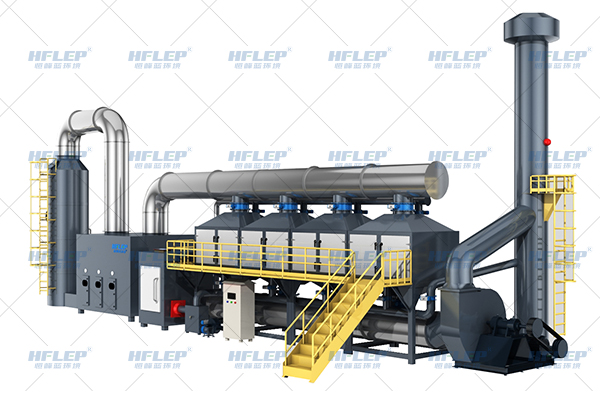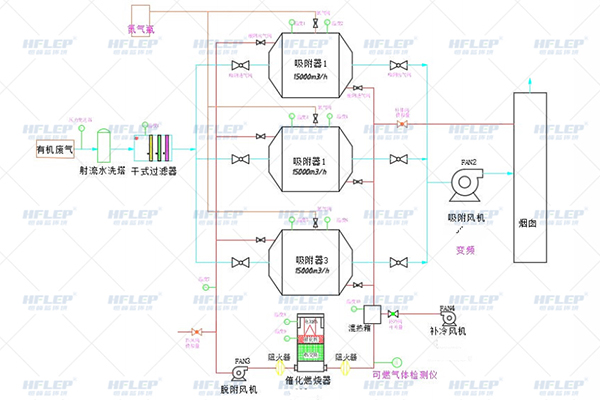Experienced Manufacturers
Production plant area of more than 10,000 square feet, more than 100 people construction team.
 Hotline
Hotline

Industry Introduction
Carbon fiber composite material is transformed from organic fibers through a series of heat treatment, the carbon content is higher than 90% of the inorganic high-performance fibers, is a new material with excellent mechanical properties, with the intrinsic nature of carbon material characteristics, and both the textile fibers of the softness of the processability, is a new generation of reinforcing fibers. Widely used in aircraft structural materials, electromagnetic shielding materials, artificial ligaments and other body substitute materials, as well as for the manufacture of rocket shells, motor boats, industrial robots, automotive leaf springs and drive shafts.
Pollution Hazard
Carbon fibre composites in the production process will produce volatile organic emissions, mainly in the demoulding, hot pressing and pultrusion winding, oxidation furnace section will have a small amount of volatile organic emissions. Organic components such as: acrylonitrile, dimethyl alum, hydrogen cyanide, ammonia, NOx, soot, SO2, industrial dust, acrylonitrile, trimethyl sulfoxide, methyl acrylate, NH3, non-methane hydrocarbons, and other organic waste gas, which, if left untreated, can be hazardous to human health.
Overview of the treatment programme
For carbon fibre composite exhaust VOCs treatment technology, now in line with environmental emission requirements, and play a role in reducing costs and efficiency of the treatment technology, it is the use of wind reduction and thickening + combustion method of treatment technology is more economical and energy-saving. It is recommended to use: wet jet washing (multi-pipe) + dry filter + wind enrichment + catalytic combustion combination of governance, governance can meet the emission requirements of standards!
Process flow

Wet jet washing (multi-tube) + dry filtration + activated carbon adsorption and concentration + catalytic combustion process (integrated system) process treatment. Organic waste gas is collected through the pipeline, and enters the pretreatment wet jet tower to remove paint dew, acidity and particulate matter purification. After purification, the gas is introduced into the dry filter to remove particles and harmful substances on the activated carbon adsorption, and the organic waste gas is then sent to the activated carbon adsorption bed device, and the VOCs components in the waste gas are absorbed by the activated carbon and then discharged to the atmosphere in compliance with the standards.
When the activated carbon adsorption bed is saturated by electric heating high temperature (80-100 ℃ C) desorption of VOCs substances, desorption of high concentrations of organic waste gas directly into the catalytic combustion co, through the accelerated oxidation of high concentrations of waste gas by precious metals, in ( 250-350 ℃) high temperature purification and oxidation of harmless carbon dioxide (CO2) and water vapour (H20) and meet the standards of emission into the atmosphere.
Other treatment technology solutions
Low concentration and small air volume of carbon fibre composite waste gas can be used: spray tower, uv photolysis purifier, activated carbon adsorption and other single or multiple combinations of processes for treatment;
High concentration of small air volume carbon fibre composite waste gas can be used: pretreatment + zeolite molecular sieve + catalytic combustion, pretreatment + zeolite molecular sieve + RTO thermal storage incinerator, a single catalytic combustion device or a single RTO thermal storage incinerator and so on;
High concentration and large air volume carbon fibre composites exhaust gas can be used: pretreatment + zeolite rotor concentration + catalytic combustion or pretreatment + zeolite rotor concentration + RTO thermal storage incinerator and so on.
Reason for choice

Production plant area of more than 10,000 square feet, more than 100 people construction team.

A number of engineers and technicians, most of whom have more than 10 years of experience and have worked on numerous projects.

Adoption of the latest domestic and international treatment technology, with high treatment efficiency.

According to the actual needs of the project, free to customise the corresponding exhaust gas treatment solutions, all regions of the country package to meet the emission standards.

Passed the third level of construction enterprise qualification and a number of technical patents...

1000+ project experience, more than 100 industry partners, complete environmental protection qualification.
Contact - Ways
Contact information
Catalytic combustion machine is a dry filter + adsorption de...

Activated carbon adsorption and desorption + CO catalytic co...

Zeolite rotor concentration + RTO regenerative incinerator c...

Zeolite rotor concentration + CO catalytic combustion proces...

CO catalytic combustion + TO direct combustion furnace proce...

For low concentration and low air volume of waste gas treatm...


Industry Introduction
Carbon fiber composite material is transformed from organic fibers through a series of heat treatment, the carbon content is higher than 90% of the inorganic high-performance fibers, is a new material with excellent mechanical properties, with the intrinsic nature of carbon material characteristics, and both the textile fibers of the softness of the processability, is a new generation of reinforcing fibers. Widely used in aircraft structural materials, electromagnetic shielding materials, artificial ligaments and other body substitute materials, as well as for the manufacture of rocket shells, motor boats, industrial robots, automotive leaf springs and drive shafts.
Pollution Hazard
Carbon fibre composites in the production process will produce volatile organic emissions, mainly in the demoulding, hot pressing and pultrusion winding, oxidation furnace section will have a small amount of volatile organic emissions. Organic components such as: acrylonitrile, dimethyl alum, hydrogen cyanide, ammonia, NOx, soot, SO2, industrial dust, acrylonitrile, trimethyl sulfoxide, methyl acrylate, NH3, non-methane hydrocarbons, and other organic waste gas, which, if left untreated, can be hazardous to human health.
Overview of the treatment programme
For carbon fibre composite exhaust VOCs treatment technology, now in line with environmental emission requirements, and play a role in reducing costs and efficiency of the treatment technology, it is the use of wind reduction and thickening + combustion method of treatment technology is more economical and energy-saving. It is recommended to use: wet jet washing (multi-pipe) + dry filter + wind enrichment + catalytic combustion combination of governance, governance can meet the emission requirements of standards!
Process flow

Wet jet washing (multi-tube) + dry filtration + activated carbon adsorption and concentration + catalytic combustion process (integrated system) process treatment. Organic waste gas is collected through the pipeline, and enters the pretreatment wet jet tower to remove paint dew, acidity and particulate matter purification. After purification, the gas is introduced into the dry filter to remove particles and harmful substances on the activated carbon adsorption, and the organic waste gas is then sent to the activated carbon adsorption bed device, and the VOCs components in the waste gas are absorbed by the activated carbon and then discharged to the atmosphere in compliance with the standards.
When the activated carbon adsorption bed is saturated by electric heating high temperature (80-100 ℃ C) desorption of VOCs substances, desorption of high concentrations of organic waste gas directly into the catalytic combustion co, through the accelerated oxidation of high concentrations of waste gas by precious metals, in ( 250-350 ℃) high temperature purification and oxidation of harmless carbon dioxide (CO2) and water vapour (H20) and meet the standards of emission into the atmosphere.
Other treatment technology solutions
Low concentration and small air volume of carbon fibre composite waste gas can be used: spray tower, uv photolysis purifier, activated carbon adsorption and other single or multiple combinations of processes for treatment;
High concentration of small air volume carbon fibre composite waste gas can be used: pretreatment + zeolite molecular sieve + catalytic combustion, pretreatment + zeolite molecular sieve + RTO thermal storage incinerator, a single catalytic combustion device or a single RTO thermal storage incinerator and so on;
High concentration and large air volume carbon fibre composites exhaust gas can be used: pretreatment + zeolite rotor concentration + catalytic combustion or pretreatment + zeolite rotor concentration + RTO thermal storage incinerator and so on.